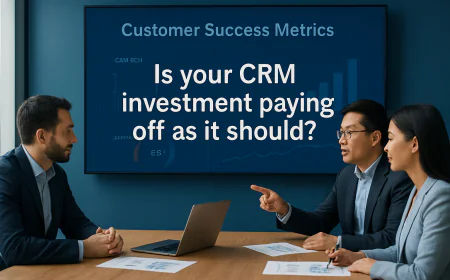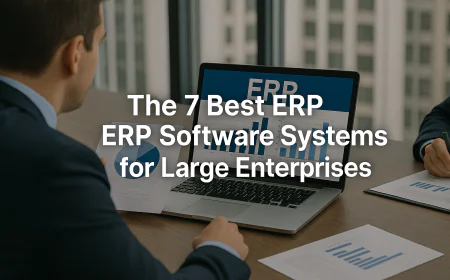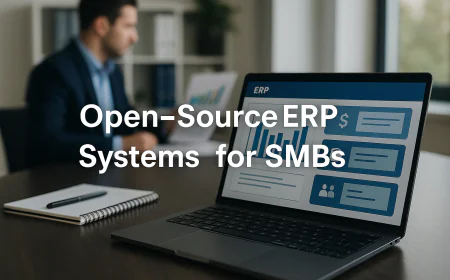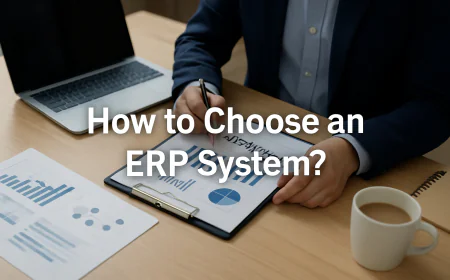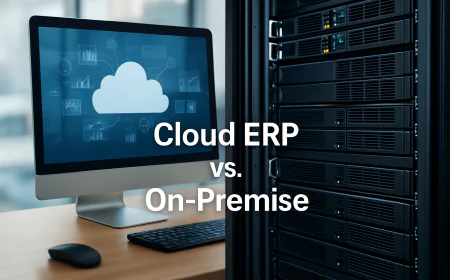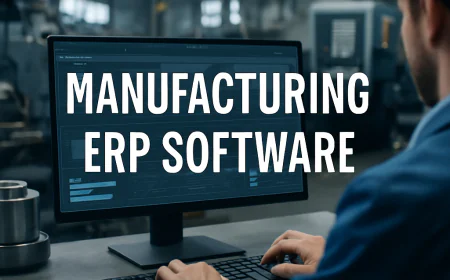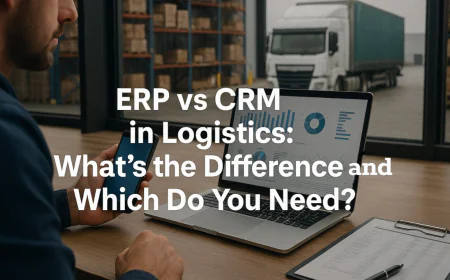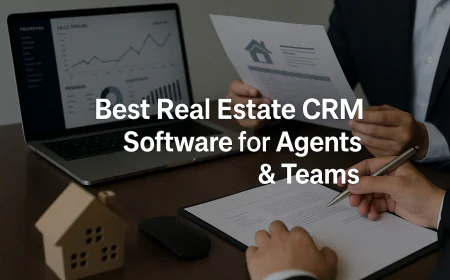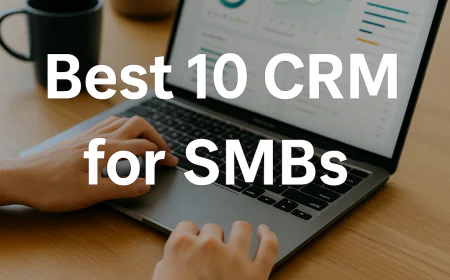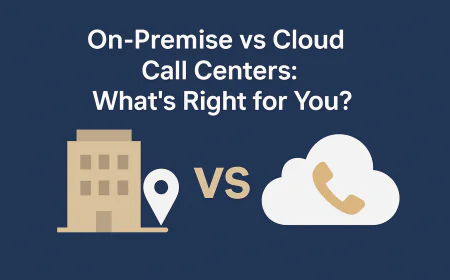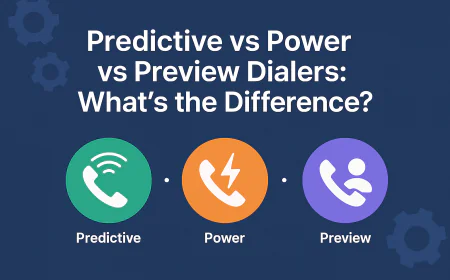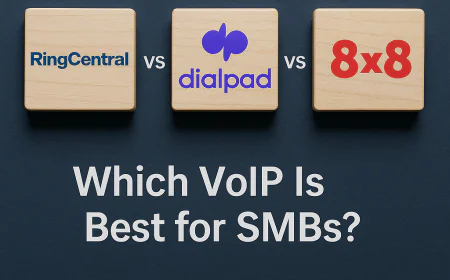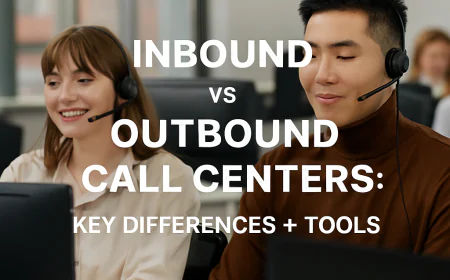Best CRM for Financial Advisors & Wealth Managers
Redtail, Wealthbox, SmartOffice, Tamarac & NexJ — which CRM helps financial advisors manage clients, trust & compliance best? Compare the top tools.

-
Introduction
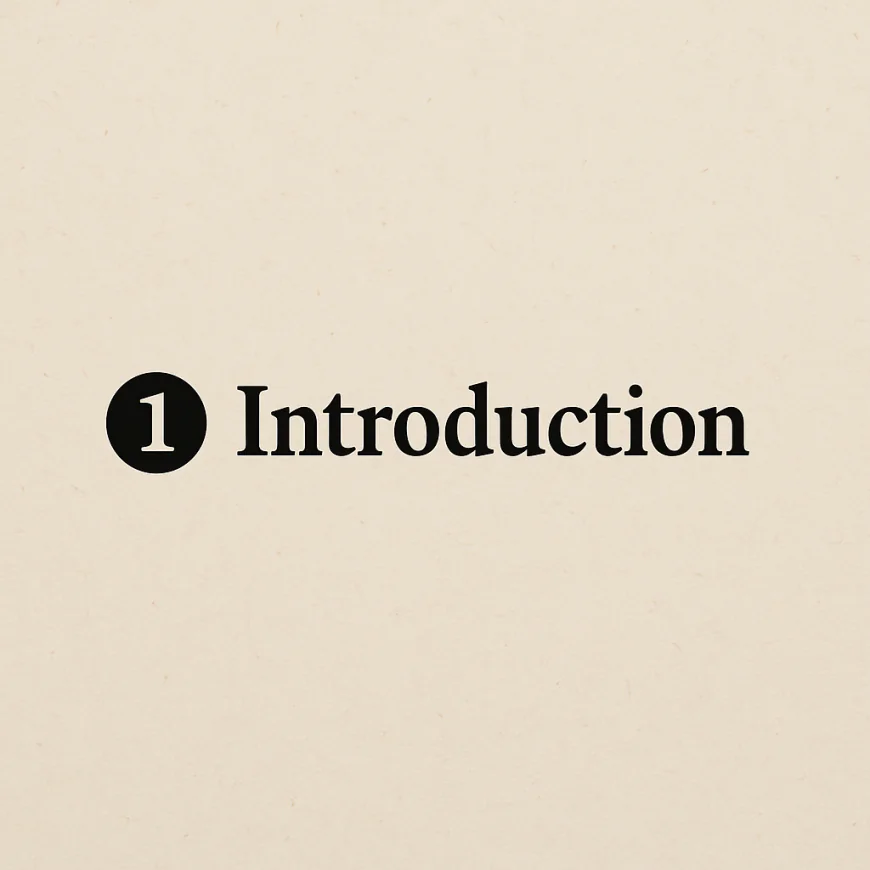
Why financial advisors need CRM built for trust and compliance
Financial advisors manage more than just portfolios—they manage long-term trust. When every client interaction involves sensitive financial data, regulatory scrutiny, and major life decisions, a generic CRM just doesn’t cut it. Financial professionals need a purpose-built system that tracks complex relationships, facilitates compliance with FINRA and SEC standards, and maintains airtight data security across every channel.
Whether you’re a solo RIA (Registered Investment Advisor) or managing a multi-advisor wealth management firm, the right CRM helps you centralize client data, monitor communications, automate workflows, and ensure every step meets industry regulations. It’s not just about efficiency—it’s about building enduring client trust and protecting your firm.
The cost of generic CRMs in regulated advisory work
Many advisors start with general-purpose CRMs like HubSpot or Salesforce Essentials, hoping to customize them later. But these tools often fall short when advisors need features like real-time compliance alerts, pre-built financial workflows, or integrations with portfolio platforms and custodians.
Using a non-specialized CRM can lead to:
-
Missed documentation for audit trails
-
Gaps in suitability compliance
-
Disconnected client conversations
-
Time lost toggling between systems
-
Increased legal and regulatory exposure
Over time, the cost of trying to “force-fit” a generic CRM can be far higher than choosing a purpose-built tool from the start.
What this guide will help you decide
This guide compares the top 5 CRMs built specifically for financial advisors and wealth management professionals. We’ll cover:
-
Which tools are best for solo RIAs vs. larger firms
-
How each CRM handles compliance, integrations, and client trust
-
The unique strengths and weaknesses of each platform
-
Real advisor feedback on usability, automation, and service
If you're tired of CRMs that aren’t made for the financial services world, you're in the right place. By the end of this guide, you’ll have a clear answer to:
👉 Which financial CRM is right for your advisory business—and why.
-
-
Key Features to Look for in a Financial CRM
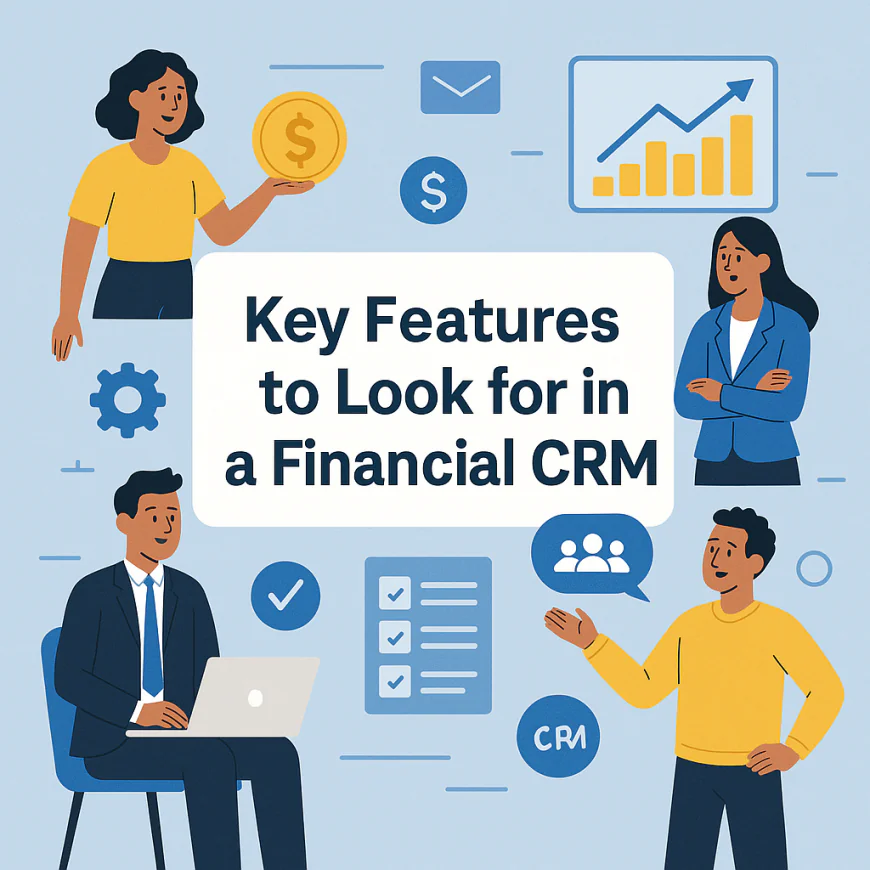
Client relationship tracking built for high-value accounts
Financial advisors don’t just manage customers—they manage deeply personal, long-term relationships. That means a CRM for this space must go beyond surface-level contact data. The ideal financial CRM should provide a 360-degree client profile, capturing:
-
Investment preferences
-
Risk tolerance
-
Family and beneficiary details
-
Milestone events (e.g., retirement, inheritance)
-
Past interactions across channels
This level of detail helps advisors deliver personalized service and maintain trust over years—not just months.
Secure document storage and e-signature support
From account opening forms to compliance disclosures, financial advisors handle a large volume of sensitive documents. A modern CRM should include:
-
Encrypted cloud storage with permission-based access
-
E-signature capabilities (or integrations with tools like DocuSign)
-
Document version tracking for regulatory audits
-
The ability to tag documents by client or policy
This ensures paperwork doesn’t fall through the cracks—and that every document is readily accessible when needed.
Automated workflows and compliance audit trails
Automation is crucial, but only if it aligns with regulatory expectations. A financial CRM should support:
-
Templated workflows for onboarding, reviews, and KYC updates
-
Audit trails showing who did what, and when
-
Task and reminder automation tied to compliance timelines
-
Email capture and storage for FINRA/SEC supervision
These features reduce compliance risk while helping your team stay proactive with every account.
Calendar integrations, scheduling, and client notes
Meetings and follow-ups drive client retention—but juggling calendars manually wastes time. Top-tier CRMs for financial advisors integrate tightly with:
-
Outlook or Google Calendar
-
Zoom or Microsoft Teams for virtual appointments
-
Integrated scheduling tools for booking reviews or check-ins
-
Rich note-taking fields for documenting client concerns and next steps
Look for CRMs that let you easily set recurring touchpoints and link meeting notes back to the client record.
Wealth planning dashboards or integrations
While CRMs aren’t portfolio managers, the best ones integrate or embed planning tools that help visualize client progress. Key features to expect:
-
Net worth snapshots tied to client profiles
-
Financial goal tracking (e.g., retirement funding, college savings)
-
Integration with platforms like Orion, eMoney, or Morningstar
-
Alerts for portfolio drift or changes in asset allocation
Advisors should be able to see the financial “big picture” without leaving the CRM.
FINRA, SEC, and data security compliance features
Compliance isn’t optional. Your CRM must be built with financial regulations in mind, offering:
-
Data encryption at rest and in transit
-
Secure role-based access controls
-
Data retention policies that meet FINRA/SEC requirements
-
Built-in supervision for communications and workflows
-
SOC 2 Type II or similar certifications
CRMs not designed for financial services often lack these protections—putting both advisors and clients at risk.
-
-
Top Financial Advisor CRM Tools Compared
-
1️⃣ Redtail CRM
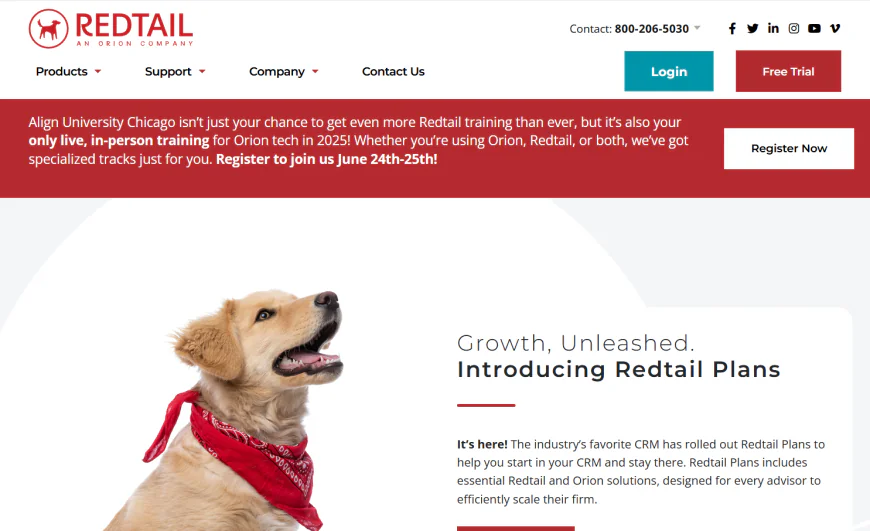
Most Popular CRM Among Financial Advisors
⬆️ What is Redtail CRM best known for?
Redtail CRM is widely considered the go-to customer relationship management platform for independent financial advisors, RIAs, and wealth management firms. Its deep industry specialization, tight integrations with major custodians, and straightforward interface have made it the most adopted CRM in the U.S. financial advisory space.
🔍 Who is Redtail CRM best for?
Redtail is best suited for:
-
Independent financial advisors or solo RIAs
-
Small to mid-sized firms needing tight compliance workflows
-
Teams seeking seamless integration with custodians like Schwab, Fidelity, and TD Ameritrade
-
Firms prioritizing ease of use and advisor adoption
⚙️ What core features does Redtail offer?
Redtail delivers a comprehensive suite of tools tailored for the advisory workflow:
-
Client Management Dashboard: All contacts, households, and history in one place
-
Activity Tracking: Automate tasks, follow-ups, and review meetings
-
Calendar & Scheduling: Integrates with Outlook and Google
-
Email Archiving: SEC-compliant email archiving + Redtail-hosted or external email integrations
-
Workflows: Pre-built or custom automations for onboarding, reviews, and service
-
Document Management: Built-in document vault with permissions and compliance controls
-
Mobile Access: Full mobile functionality via Redtail’s native iOS/Android apps
🔗 What integrations does Redtail CRM support?
Redtail’s integration ecosystem is one of its biggest strengths:
-
Custodians: TD Ameritrade, Schwab, Fidelity
-
Planning tools: eMoney, MoneyGuidePro, RightCapital
-
Marketing: FMG Suite, Snappy Kraken
-
Portfolio management: Orion, Riskalyze, Morningstar Office
-
Compliance: SmartRIA, Smarsh, MyRepChat
💬 What do real financial advisors say about Redtail CRM?
🌟 What they love:
-
Extremely easy for new staff or junior advisors to learn
-
Robust integrations with planning and custodian platforms
-
Responsive, U.S.-based support team
⚠️ What users say could be better:
-
Interface feels outdated compared to newer tools like Wealthbox
-
Workflow builder can feel rigid or clunky
-
Occasional syncing delays with integrated email or calendar tools
🌐 Where can I learn more about Redtail CRM?
Visit the official website here: https://www.redtailtechnology.com
-
-
2️⃣ Wealthbox
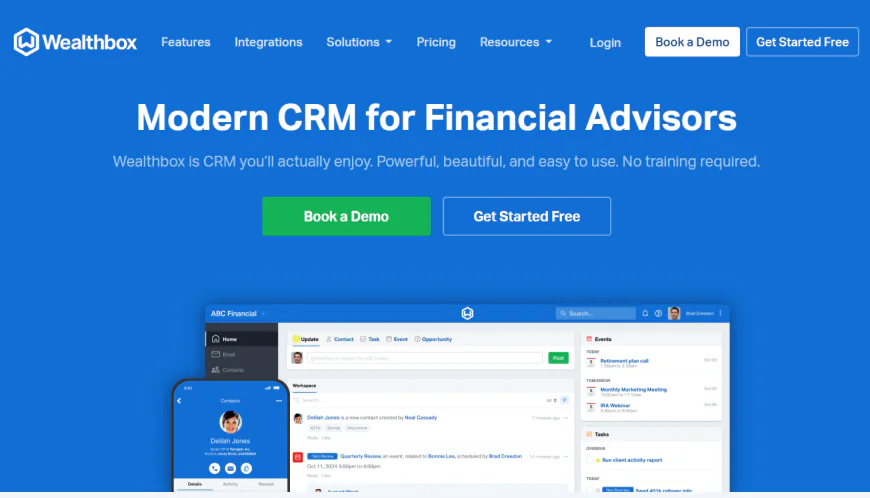
Sleek, Modern CRM Built for RIAs
⬆️ What is Wealthbox best known for?
Wealthbox is known for its modern, intuitive interface and lightweight yet powerful CRM functionality. Designed specifically for registered investment advisors (RIAs), it combines usability with advanced features, making it a favorite among small advisory teams and tech-savvy firms who want fast onboarding and high adoption without complex setup.
🔍 Who is Wealthbox best for?
Wealthbox is ideal for:
-
Solo RIAs or small teams who value elegant, easy-to-learn interfaces
-
Advisors tired of clunky legacy CRMs like Redtail or Salesforce
-
Firms that want built-in task, email, and workflow tools without complex configuration
-
Advisors needing quick-start compliance-friendly tools out of the box
⚙️ What core features does Wealthbox offer?
Wealthbox includes a polished mix of CRM and advisory-specific features:
-
Unified Contact & Household Views: Clean client timelines with activity history
-
Email Sync & Logging: Connects to Gmail, Outlook, and Office 365 with automatic archiving
-
Task Management: Assign to team members, add notes, and track progress
-
Pipeline Tracking: Visual opportunity stages to manage prospects and onboarding
-
Calendar & Scheduling: Built-in calendar or sync with Google/Outlook
-
Workflow Templates: Prebuilt workflows for onboarding, client reviews, and financial planning
-
Mobile App: Fast, responsive app for on-the-go client check-ins
🔗 What integrations does Wealthbox support?
Wealthbox is tightly integrated into the RIA tech ecosystem, with:
-
Custodians: Fidelity, Schwab, Pershing
-
Planning tools: RightCapital, MoneyGuidePro, eMoney
-
Marketing: Snappy Kraken, Advisor Websites
-
Portfolio platforms: Orion, Black Diamond, Morningstar
-
Other: Zapier, Zoom, Slack, Riskalyze, MyRepChat
💬 What do real financial advisors say about Wealthbox?
🌟 What they love:
-
Extremely easy to set up — often usable in under a day
-
Visually modern and clean interface
-
Excellent customer support and onboarding help
-
Frequent product updates and fast feature rollout
⚠️ What users say could be better:
-
Less customizable than Redtail for complex workflows
-
Limited document storage and no true document vault
-
Reporting is basic unless paired with external tools
🌐 Where can I learn more about Wealthbox?
Visit the official website here: https://www.wealthbox.com
-
-
3️⃣ SmartOffice
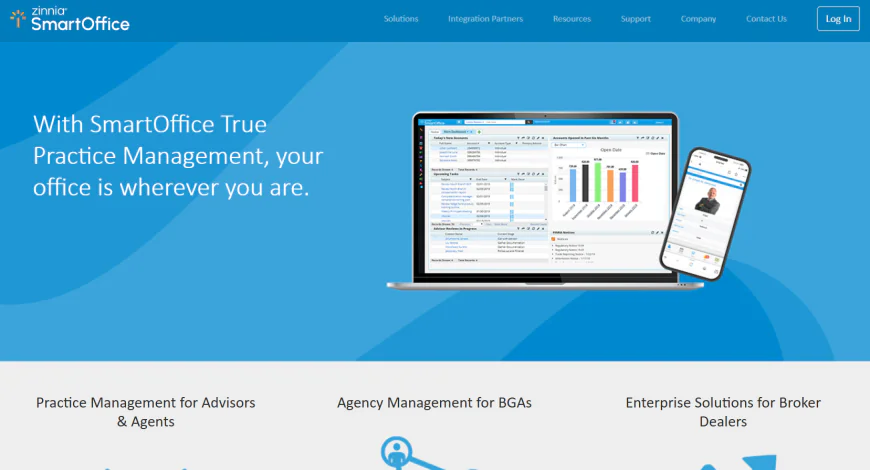
Insurance + Financial CRM for Hybrid Advisors
⬆️ What is SmartOffice best known for?
SmartOffice by Ebix is widely recognized as a CRM purpose-built for financial advisors who also sell insurance products. It offers strong client management tools alongside commission tracking, policy management, and compliance workflows — making it an attractive choice for hybrid agents straddling the investment and insurance worlds.
🔍 Who is SmartOffice best for?
SmartOffice is ideal for:
-
Financial professionals offering both investment and insurance services
-
Advisors who want CRM + policy tracking + commissions in one system
-
Larger firms that need robust reporting, audit trails, and rep management
-
Independent broker-dealers and multi-line advisors who need carrier integration
⚙️ What core features does SmartOffice offer
SmartOffice includes a broad set of advisor-centric capabilities:
-
Client & Household Records: Full financial profiles with policy, account, and contact history
-
Policy & Investment Tracking: Manage annuities, life insurance, and AUM in one view
-
Commissions & Revenue: Track incoming payments from carriers and reconcile earnings
-
Calendar, Tasks & Notes: Sync with Outlook, log interactions, and follow-up dates
-
Document Storage & Compliance Notes: Maintain client docs, disclosures, and suitability data
-
Practice Management Dashboard: Built-in KPIs, rep hierarchy tools, and opportunity tracking
🔗 What integrations does SmartOffice support?
SmartOffice connects with many key platforms used by hybrid advisory teams:
-
Insurance Carriers: Direct connections with select life & annuity providers
-
Planning Tools: MoneyGuidePro, eMoney (partial)
-
Email & Calendar: Microsoft Outlook, Exchange
-
Document Tools: Laserfiche, DocuSign
-
Data Aggregation: Albridge, DST Vision
Note: Integration depth varies depending on version and configuration.
💬 What do real advisors say about SmartOffice?
🌟 What they love:
-
Great “all-in-one” hub for financial + insurance business
-
Strong policy management and commission tracking tools
-
Flexible for multi-rep and multi-entity setups
-
Built-in suitability and compliance workflow options
⚠️ What users say could be better:
-
User interface is dated compared to modern CRMs
-
Steeper learning curve for solo advisors or small teams
-
Mobile experience is limited; best on desktop
-
Reporting system can be complex to configure
🌐 Where can I learn more about SmartOffice?
Visit the official website here: https://www.smartofficecrm.com/
-
-
4️⃣ Tamarac CRM
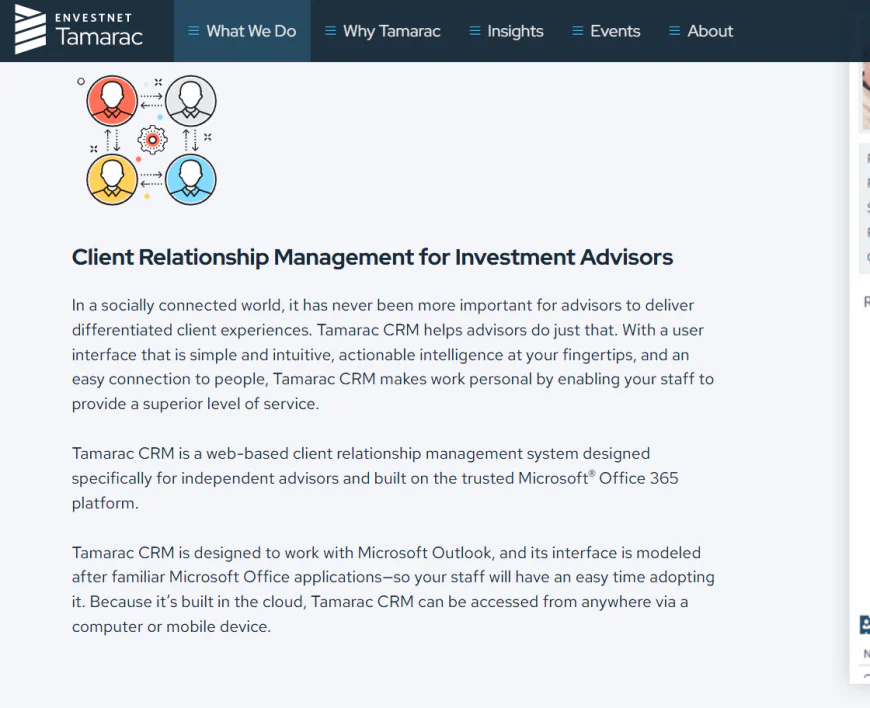
Deep Portfolio Integration for Large Firms
Best for RIAs seeking tight portfolio management + CRM alignment
What is Tamarac CRM and who is it for?
Tamarac CRM is a Microsoft Dynamics 365–based CRM tailored for independent RIAs and wealth management firms. It’s part of the Envestnet | Tamarac suite, which includes portfolio rebalancing, billing, and reporting tools. Tamarac CRM is best suited for medium to large advisory firms that need deep integration between client relationship data and portfolio systems.
It’s not a lightweight tool for solo advisors — Tamarac is designed for scale, compliance, and operational efficiency.
What are Tamarac CRM’s standout features?
-
Tight Integration with Tamarac Portfolio Tools: Native connection to Tamarac Rebalancing, Reporting, and Client Portal means fewer data silos and real-time portfolio insights within CRM.
-
Custom Workflows & Automation: Firms can build out approval flows, task triggers, and automations for client onboarding, reviews, and ongoing service.
-
Document Management: Supports integrations with third-party tools like SharePoint and Laserfiche for secure document handling.
-
Compliance-Ready Features: Audit trails, interaction tracking, notes, and SEC/FINRA-aligned configurations available out of the box.
-
Role-Based Dashboards: Advisors, operations, and compliance officers each get tailored views.
-
Enterprise-Class Customization: Built on Dynamics 365 — can be fully tailored to complex firm processes.
What are the limitations?
-
Not Ideal for Small Firms: High cost, lengthy implementation, and robust features make it overkill for small RIAs.
-
Complex Configuration: While powerful, Tamarac CRM often requires consultants or experienced admins to implement effectively.
-
No Mobile App of Its Own: Users rely on the Dynamics 365 mobile interface, which may feel generic compared to modern CRM apps.
Does Tamarac CRM integrate well with planning and custodian tools?
Yes — as part of Envestnet’s broader ecosystem, Tamarac CRM supports integrations with:
-
Envestnet’s proposal generation and planning platforms
-
Fidelity, Schwab, TD Ameritrade custodial feeds
-
Orion and other performance tools
-
Microsoft Office 365 and Outlook
Its greatest strength lies in unifying portfolio management, CRM, and reporting under one umbrella.
What do real advisory firms say about Tamarac CRM?
🌟 What users love:
-
Seamless access to client portfolios from the CRM
-
High flexibility for enterprise workflows
-
Strong compliance visibility and reporting
⚠️ What some dislike:
-
Setup complexity and reliance on consultants
-
Learning curve for new users
-
Not mobile-first
Where can I learn more about Tamarac CRM?
You can explore the full solution at their official website:
🔗 https://www.tamaracinc.com
-
-
5️⃣ NexJ CRM
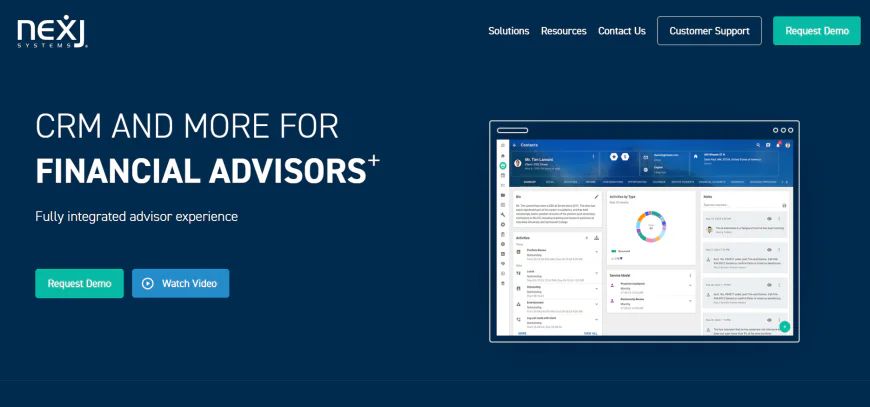
Enterprise-Grade Wealth Management CRM
Best for global wealth firms needing AI, compliance, and omnichannel integration
What is NexJ CRM and who is it for?
NexJ CRM is a specialized, enterprise-class CRM platform built exclusively for wealth managers, private bankers, and financial services firms. It’s used by some of the largest advisory institutions globally and is designed to manage complex client relationships with full compliance, security, and deep financial integration.
This is not a simple out-of-the-box CRM — NexJ is purpose-built for firms managing ultra-high-net-worth (UHNW) clients, with needs that extend beyond traditional CRM functionality.
What makes NexJ CRM stand out from other financial CRMs?
-
Client-Centric Data Model: NexJ offers a unique layered data structure to unify every client interaction, portfolio insight, household detail, and preference — across regions and teams.
-
AI-Powered Intelligence: Suggests next best actions, identifies risks, and delivers personalized engagement insights through built-in AI.
-
Comprehensive Compliance: Tracks interactions, documents approvals, manages E&O risk, and aligns with global regulations (including GDPR, FINRA, and SEC).
-
360° Omnichannel Engagement: Combines phone, email, meetings, and digital messaging into a single timeline per client or household.
-
Wealth-Specific Integrations: Works with portfolio management systems, core banking tools, and legacy back-office infrastructure.
-
Global Scalability: Multilingual, multi-currency, and region-specific compliance ready — ideal for firms with international operations.
What are some limitations of NexJ CRM?
-
Enterprise-Only Pricing and Complexity: This is not suitable for solo RIAs or even most small firms. Implementation can take months.
-
Requires Heavy IT Resources: Setup, integration, and maintenance demand skilled internal teams or external consultants.
-
Limited Presence in the U.S. SMB RIA Market: While dominant in Canada and global banks, it's less known among U.S. independent advisors.
Does NexJ CRM integrate well with portfolio and wealth platforms?
Yes — it supports deep integrations with:
-
Core banking systems and legacy platforms
-
Portfolio management and rebalancing software
-
Document management systems
-
Microsoft 365, Exchange, and leading enterprise communication suites
Its strength lies in bringing fragmented legacy and modern systems together under one intelligent CRM umbrella.
What do enterprise wealth firms say about NexJ CRM?
🌟 What users love:
-
Advanced compliance tracking and reporting
-
Truly holistic view of client households
-
Global capabilities and customizable workflows
⚠️ What some dislike:
-
High cost and technical onboarding
-
Not a fit for smaller advisory firms or independent advisors
-
Requires training to fully leverage all capabilities
Where can I learn more about NexJ CRM?
Official website here:
🔗 https://www.nexj.com
-
-
🏆 Final Verdict
✓ YouConclude
Which Financial CRM is the Best?
Choosing the best CRM for financial advisors and wealth managers isn’t simple. Each platform brings powerful features tailored for different types of firms, workflows, and compliance needs. No one CRM is perfect for everyone. However, if we had to pick a clear winner based on overall balance, adoption, and advisor-focused features, it would be Redtail CRM.
Why Redtail Wins?
Redtail CRM stands out for its extensive advisor-centric features combined with a user-friendly interface and robust compliance tools. It has become the industry standard partly because of its:
-
Wide Custodial Integrations: It connects seamlessly with major custodians like Schwab, Fidelity, and TD Ameritrade, enabling smooth client onboarding and account syncing.
-
Compliance & Audit Trails: Built-in audit trails and SEC/FINRA compliance support ease regulatory burdens.
-
Lead & Client Management: Redtail’s pipeline management tools help advisors track prospects and automate follow-ups.
-
Community & Support: A large user base means strong support forums, training resources, and ongoing updates driven by user feedback.
-
Pricing: More accessible to small and mid-size RIAs compared to enterprise platforms.
While some users note the UI feels a bit dated, its reliability and depth more than compensate.
Where Each CRM Shines — and What to Watch For:
1️⃣ Redtail CRM
Strengths:
-
Industry-leading integrations with custodians and financial planning platforms
-
Strong compliance and audit trail features designed for regulated advisors
-
Automated workflows and robust client data management
-
Large ecosystem with third-party integrations
-
Mobile-friendly apps for on-the-go advisors
Weaknesses:
-
User interface feels utilitarian and less modern compared to newer CRMs
-
Reporting can be less customizable without third-party tools
-
Some advanced automation requires workarounds or add-ons
2️⃣ Wealthbox
Strengths:
-
Sleek, intuitive interface focused on ease of use and adoption
-
Modern, social-media-inspired collaboration tools for teams
-
Robust activity tracking, task management, and calendar integrations
-
Simple setup and onboarding ideal for small firms and solo advisors
-
Built-in email sync and secure client communication
Weaknesses:
-
Lacks deep portfolio management or wealth planning features natively
-
Limited out-of-the-box compliance features compared to Redtail
-
Smaller ecosystem for third-party integrations and custodial connections
3️⃣ SmartOffice
Strengths:
-
Combines insurance and financial CRM workflows, great for hybrid advisors
-
Integrated insurance quoting and policy management modules
-
Strong document management with e-signature and secure storage
-
Good at managing commissions and agent workflows
-
Customizable workflows tailored to insurance-heavy firms
Weaknesses:
-
User experience is dated and can feel clunky
-
Integrations are limited mostly to insurance carriers, less focus on portfolio tools
-
Steeper learning curve, especially for financial-only advisors
4️⃣ Tamarac CRM
Strengths:
-
Deep integration with portfolio management and rebalancing tools
-
Enterprise-grade compliance management and audit trail features
-
Strong client reporting and wealth planning dashboards
-
Scalable for multi-office wealth management firms
-
Comprehensive workflows for advisor teams and assistants
Weaknesses:
-
High cost and complexity, making it less ideal for small firms or solo advisors
-
Setup and training require significant time investment
-
Not as user-friendly or modern-feeling as some competitors
5️⃣ NexJ CRM
Strengths:
-
AI-driven engagement tools tailored for enterprise wealth managers
-
Global compliance capabilities covering complex regulations
-
Highly customizable client data models for private banking and large firms
-
Strong focus on client lifecycle management and client insights
-
Powerful analytics and reporting designed for large, data-driven teams
Weaknesses:
-
Overkill for smaller advisors or boutique firms with simpler needs
-
Expensive and requires dedicated IT resources to implement and maintain
-
Less intuitive interface, which can slow user adoption initially
✓ YouConclude Tip
When choosing a CRM for financial advisory work, consider your firm size, workflow complexity, and compliance needs first. Redtail CRM remains the best all-around option for most financial advisors and RIAs thanks to its balanced feature set and trusted reputation. But if you are a small team looking for simplicity, Wealthbox shines. For insurance-heavy practices, SmartOffice is tailored for you. Larger wealth teams with complex portfolio needs will find Tamarac and NexJ better suited, though at a higher cost and complexity.
-
-
🔄 FAQs
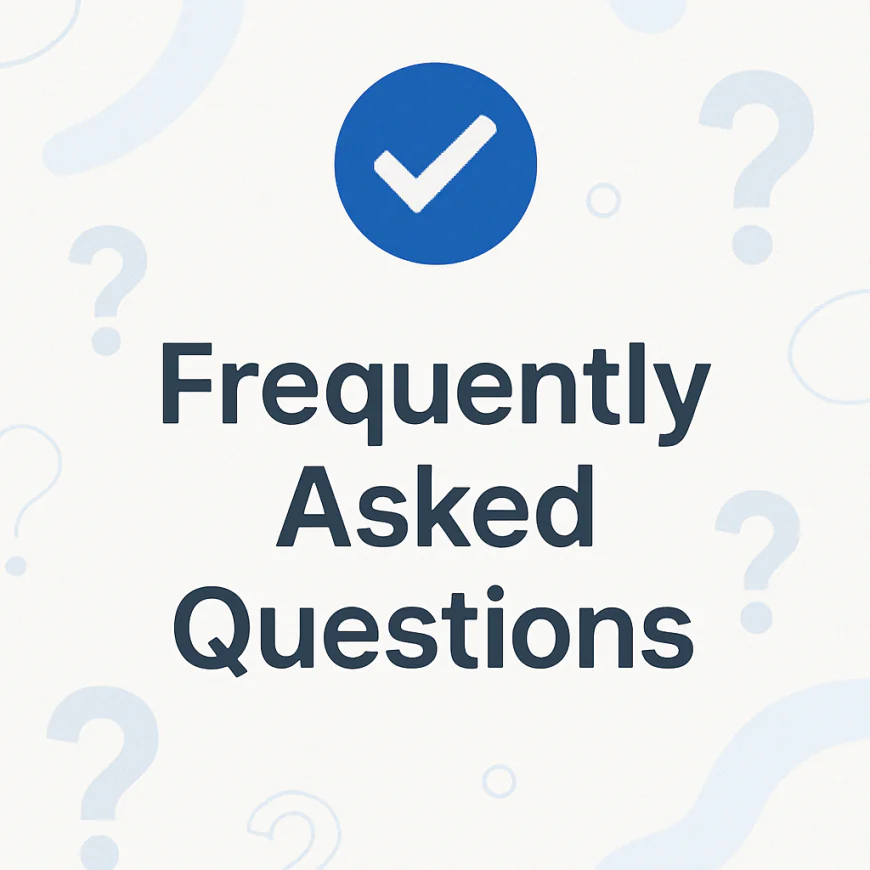
Why do financial advisors need a CRM instead of using spreadsheets or generic tools?
A purpose-built financial CRM centralizes client communications, task tracking, compliance documentation, and investment planning in one place. Unlike spreadsheets or generic CRMs, financial CRMs support SEC/FINRA regulations, offer secure document storage, audit trails, and integrations with custodians — all critical for staying compliant and scalable.
Can Redtail or Wealthbox replace portfolio management tools like Orion or eMoney?
Not entirely. Redtail and Wealthbox excel at relationship and workflow management, but they don't offer deep portfolio analytics or rebalancing. However, both integrate well with tools like Orion, eMoney, and Morningstar, allowing advisors to build a seamless stack for both CRM and investment oversight.
What’s the best CRM for solo advisors or small RIAs?
For most solo RIAs, Wealthbox is the easiest to adopt, thanks to its intuitive UI and clean workflows. Redtail is also strong, especially if compliance needs are higher. If the advisor also sells insurance, SmartOffice offers dual-functionality out of the box.
Which CRM is strongest for meeting compliance needs?
Tamarac CRM and Redtail lead in compliance strength. Tamarac offers deep audit trails and workflow control for larger teams, while Redtail includes built-in FINRA/SEC-oriented documentation and approval tracking. NexJ also shines in regulated environments but is best suited for enterprise-level firms.
Do these CRMs integrate with custodians like Schwab, Fidelity, or TD Ameritrade?
Yes — most of them do.
-
Redtail integrates with Schwab, TD, Fidelity, and many planning platforms.
-
Wealthbox supports similar custodians, though integrations may require Zapier or APIs.
-
Tamarac has native integrations, especially within Envestnet's ecosystem.
-
NexJ also supports deep integrations, but typically through custom enterprise deployment.
SmartOffice, while strong for insurance, is more limited in custodial connectivity.
Can a CRM help improve client trust and retention in advisory work?
Absolutely. A good CRM helps advisors remember client preferences, track life events, deliver timely follow-ups, and maintain secure records — all of which build credibility. It also automates workflows so nothing slips through the cracks, enhancing both service and compliance — two pillars of long-term client trust.
How do these CRMs handle household vs. individual client views?
Financial advisors often serve families or multi-generational relationships.
-
Redtail supports householding natively, letting you link individuals under a single family umbrella.
-
Wealthbox handles it with tags and relationship links, though it’s not as visual.
-
SmartOffice excels here, letting you assign financial plans or policies to specific family members.
-
Tamarac CRM offers dynamic relationship mapping ideal for HNW family offices.
-
NexJ provides a “360-degree client view” that layers in complex household, legal, and relationship hierarchies — perfect for private banking or ultra-high-net-worth practices.
Which CRM offers the best workflow automation for client onboarding and reviews?
-
Redtail has workflow templates for onboarding, annual reviews, and compliance.
-
Wealthbox uses "Workflows" with customizable task dependencies but has fewer templates.
-
Tamarac integrates workflows directly with portfolio actions and trading steps.
-
SmartOffice supports event-triggered tasks (e.g., policy renewal, birthday emails).
-
NexJ stands out with AI-assisted next-best-action logic and event-driven workflows that scale across enterprise teams.
How do these CRMs ensure data security and compliance with regulations like SEC, FINRA, or GDPR?
All tools offer secure hosting and encryption, but compliance tooling varies:
-
Redtail and Tamarac provide detailed audit logs, permission controls, and archival capabilities.
-
Wealthbox is SOC 2 compliant but leans on integrations for compliance archiving.
-
NexJ leads in security with role-based access, data residency controls, and enterprise-grade compliance frameworks (especially for firms operating in multiple regulatory zones).
-
SmartOffice complies with HIPAA and insurance data rules but lacks deeper FINRA tools.
Which of these CRMs work best for hybrid firms doing both insurance and investment planning?
-
SmartOffice was designed for this hybrid model — life, annuity, and investment data sit side by side.
-
Redtail can work well with integrations to insurance quoting tools like iPipeline.
-
NexJ offers multi-line capabilities but is more suited to enterprise hybrid shops.
-
Wealthbox and Tamarac are investment-focused and not optimized for embedded insurance workflows.
What do power users say about long-term performance and support with each platform?
-
Redtail users praise strong advisor-specific support but report occasional performance slowdowns.
-
Wealthbox wins on modern UI and responsiveness, though some advanced users say deeper customization is lacking.
-
Tamarac users enjoy integration depth but cite a steep learning curve.
-
SmartOffice users appreciate the dual insurance/financial capability but call the interface outdated.
-
NexJ is praised by enterprise users for its robustness, but implementation and cost can be barriers for smaller firms.
Can these CRMs help with succession planning and continuity readiness?
Yes — but to different degrees:
-
Redtail offers role permissions, workflow delegation, and advisor assignments to prep for continuity.
-
Wealthbox supports shared workspace models to allow for succession team transitions.
-
Tamarac CRM includes client data transfer protocols and shared team folders.
-
NexJ is enterprise-ready for this, offering full client lifecycle documentation across users.
-
SmartOffice supports team-based logins but lacks some of the deeper continuity features found in the others.
-
What's Your Reaction?
 Like
0
Like
0
 Dislike
0
Dislike
0
 Love
0
Love
0
 Funny
0
Funny
0
 Angry
0
Angry
0
 Sad
0
Sad
0
 Wow
0
Wow
0
